aNewDomain.net — Regularly defragging your hard drive has always been key to keeping Windows running smoothly. Even though Windows 8 lessens the need for constant defragging, you still need to optimize your hard disk. Here’s how to optimize your hard disk in Windows 8.
Note: Never attempt to defrag a solid state drive (SSD.) The technology inside an SSD isn’t intended for a defrag. Rather, optimize your SSDs with the built-in TRIM optimization in Windows. Watch aNewDomain for more on how to use that tech. Also note, backing up is always recommended before defragging or otherwise optimizing your disk. Either do a full backup or enable File History.
How To Optimize Your Hard Disk Drive with the Win 8 Optimization Tool
Windows 8 includes an optimization tool that allows three ways to optimize your hard drive.
- Defragment: Rearranges the files of a specific hard drive in a contiguous order.
- Trim Optimization: Tells the backing storage which data blocks are out of use. This allows the storage to then optimize performance and space for future use.
- Slab Consolidation: This process is used primarily in thinly provisioned drives. It rearranges data from sparsely populated slabs to densely populated slabs.
Microsoft provides this chart to explain which optimization feature is best for your drive. The chart also gives specifics on the differences between thinly provisioned drives and VHDs, which is helpful but geared toward a techie rather than the common user.
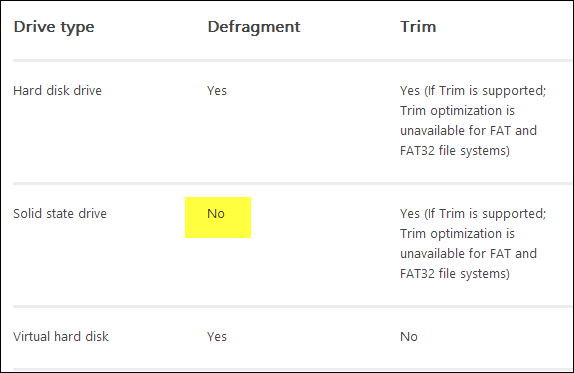
Manual Optimization
In both Windows 8 and 8.1 use the keyboard shortcut Windows Key + W.
This will open a Settings search field. Once there, type: defrag.
Click on the window Defragment and Optimize Your Drives that appears beneath the search bar.
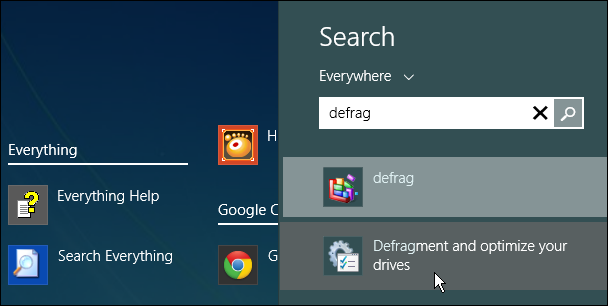
The Optimize Drives window should pop up. Select the drive you want to optimize — usually (C:) your root local drive.
Click Analyze to see how fragmented your drive is. To ensure it is properly defragged, click the Optimize button.
Windows XP provided a graphical representation of your hard drive to illustrate which parts had been fragmented. But in Windows 8 and 8.1 it will simply display a percentage below the Current Status column. In the example below, notice my drive is all good.
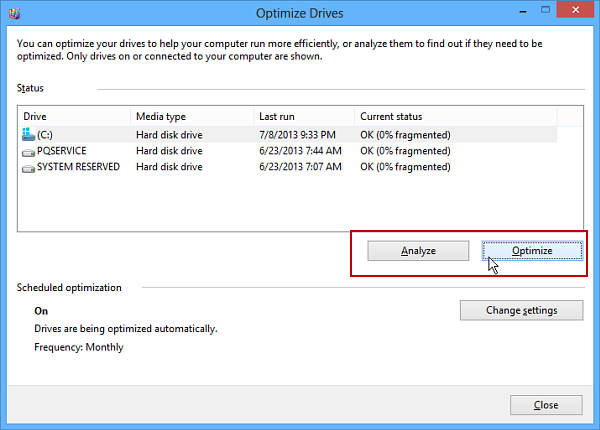
How Do I Schedule My Drive to Be Optimized?
By default Windows 8 is set to optimize your drive every 30 days, but you can change that. On the screen above click the Change Settings button. Then you can schedule it to run on any schedule you set.
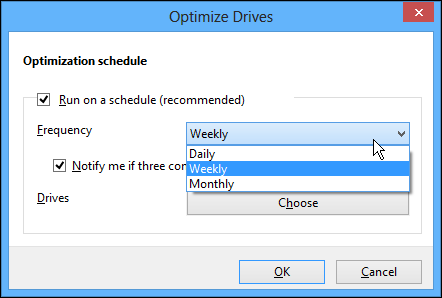
Here you select what drives in your system how and whether to optimize new and old system drives.
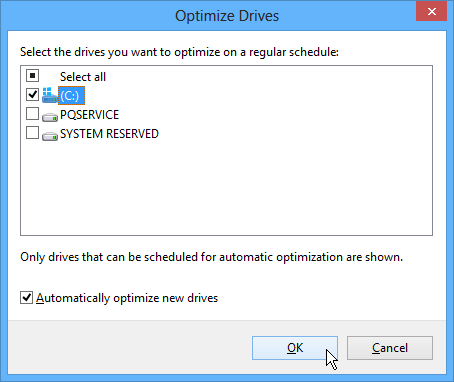
And that’s how to optimize your hard disk in Windows 8 — and Windows 8.1. Keep your system running smoothly and stay tuned to more of my How To galleries here at aNewDomain.net.
Based in Pelican Rapids, Minnesota, Brian Burgess is a tech pro and journalist renowned for his work at HowToGeek.com. He served as executive editor at teamBYTE, is one of the founding editors here at aNewDomain and serves as editor-in-chief at GroovyPost. He heads up How To galleries at aNewDomain.net. Email him at Brian@aNewDomain.net and find him on Google + and on Twitter as @mysticgeek.












